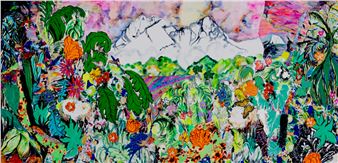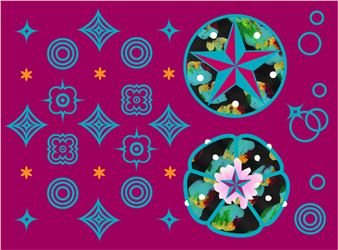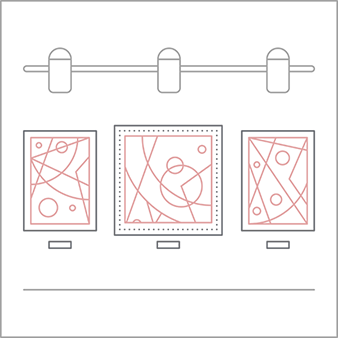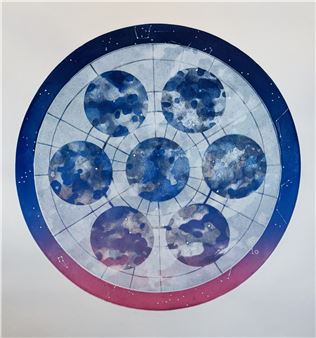Fabiola Menchelli: ombrûˋ
Fabiola Menchelliãs installation ombrûˋ debuts new photographic prints, a continuation of her Parallelograms body of work. The work strips down the photographic print to its essential materials and physical properties, creating a diffused perceptual experience. About this series Menchelli shares,
ãWhat happens when two opposing forces reject each other, but instead meet?
Parallelograms explore the encounters, a space where two lines, though they do not intersect, remain connected, creating something greater than themselves. Like yin and yang, opposites are not separate extremes but parts of a whole that merge within the same space. This series offers a luminous experience where the simplicity of two lines opens the door to the opposing.
Through the physical act of folding, two lines are formed: one seems to rise, and the other to descend, generating a curve between them. These lines come to life through light, creating a fluid landscape where light doesnãt just illuminate, it also expands the boundaries of the form. In that continuity, and in the tension of opposites, light fades from shadow to brightness, revealing a balance in which both sides complement each other. The transition between tones is not abrupt but a fusion that suggests movement. Each piece is a fragment of something larger ã a piece of a puzzle.
Paralelogramas plays with contrasts, creating a converging space where light ceases to be an external element and instead becomes the very material of the work.ã
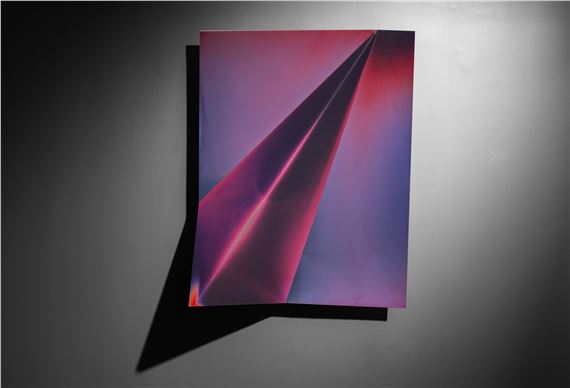
Recommended for you
Fabiola Menchelliãs installation ombrûˋ debuts new photographic prints, a continuation of her Parallelograms body of work. The work strips down the photographic print to its essential materials and physical properties, creating a diffused perceptual experience. About this series Menchelli shares,
ãWhat happens when two opposing forces reject each other, but instead meet?
Parallelograms explore the encounters, a space where two lines, though they do not intersect, remain connected, creating something greater than themselves. Like yin and yang, opposites are not separate extremes but parts of a whole that merge within the same space. This series offers a luminous experience where the simplicity of two lines opens the door to the opposing.
Through the physical act of folding, two lines are formed: one seems to rise, and the other to descend, generating a curve between them. These lines come to life through light, creating a fluid landscape where light doesnãt just illuminate, it also expands the boundaries of the form. In that continuity, and in the tension of opposites, light fades from shadow to brightness, revealing a balance in which both sides complement each other. The transition between tones is not abrupt but a fusion that suggests movement. Each piece is a fragment of something larger ã a piece of a puzzle.
Paralelogramas plays with contrasts, creating a converging space where light ceases to be an external element and instead becomes the very material of the work.ã
Artists on show
Related articles
Through narrative, apotheosis, humor, and personification, David-Jeremiah explores the complexities of humanityãs perpetual cycles: self-reflection, contradiction, and unbecoming.
Entering ombrûˋ, Fabiola Menchelliãs installation at The Contemporary at Blue Star in San Antonio, I impulsively turned on my iPhoneãs flashlight.

 ARTISTS
ARTISTS








